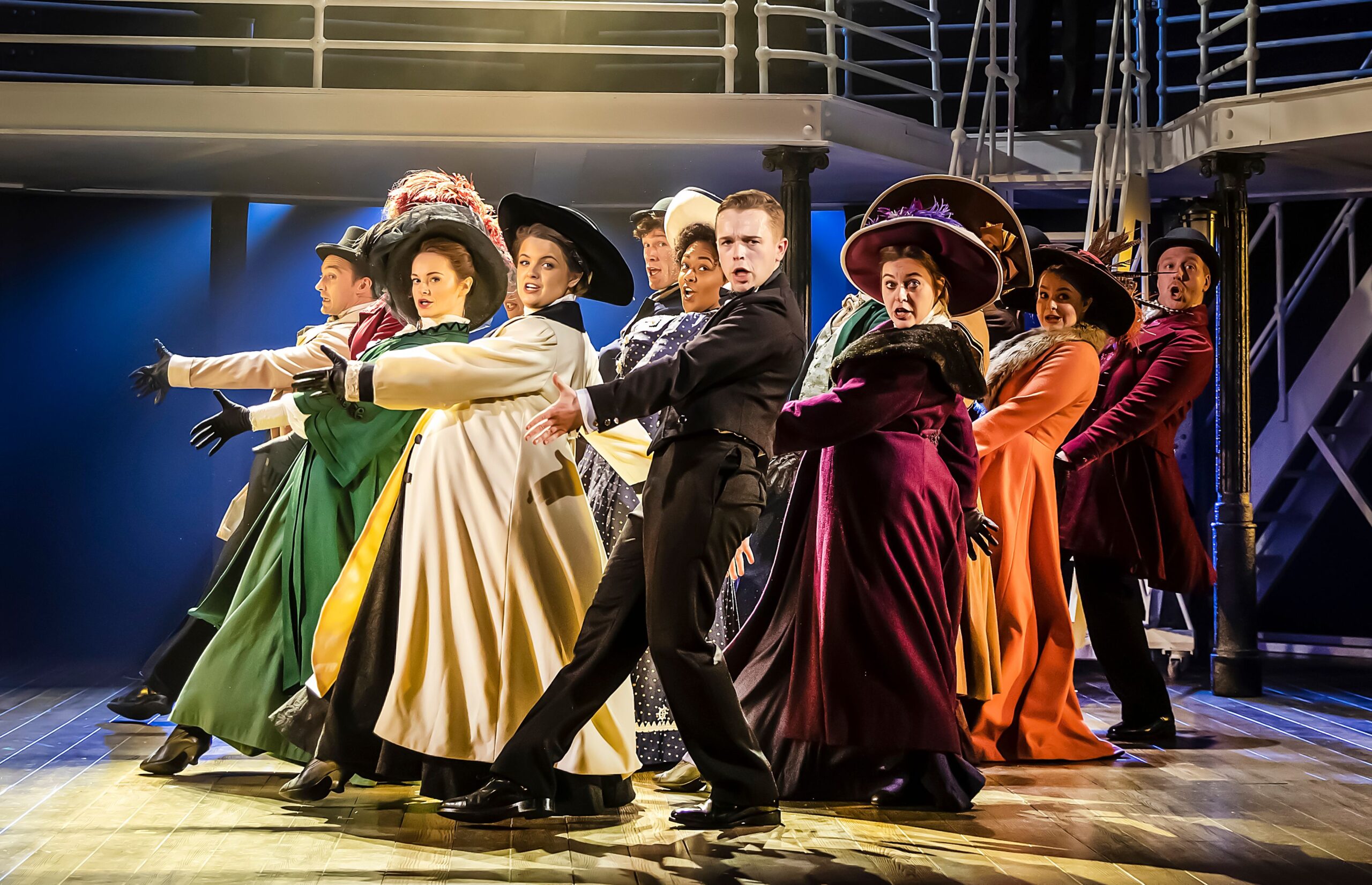ONLINE — 1997 was the year of the Titanic. James Cameron released the famous film that year, but a lesser known work of art, Titanic the Musical, with music and lyrics by Maury Yeston and a book by Peter Stone, and opened on Broadway and proceeded to win several Tony Awards, including Best Musical. As a recent high school graduate, I was lucky enough to see the musical in the Tony season. Because of the cost of producing such a show, it seems to be rarely done, and while there have been some notable productions in Utah, I have not been able to see another production since June of 1997. So, when I was offered an opportunity as part of the American Theatre Critics Association’s annual conference to see the professional filmed version of the UK Tour that will be in movie theaters on November 4th and 8th in the US, I was thrilled with the chance.
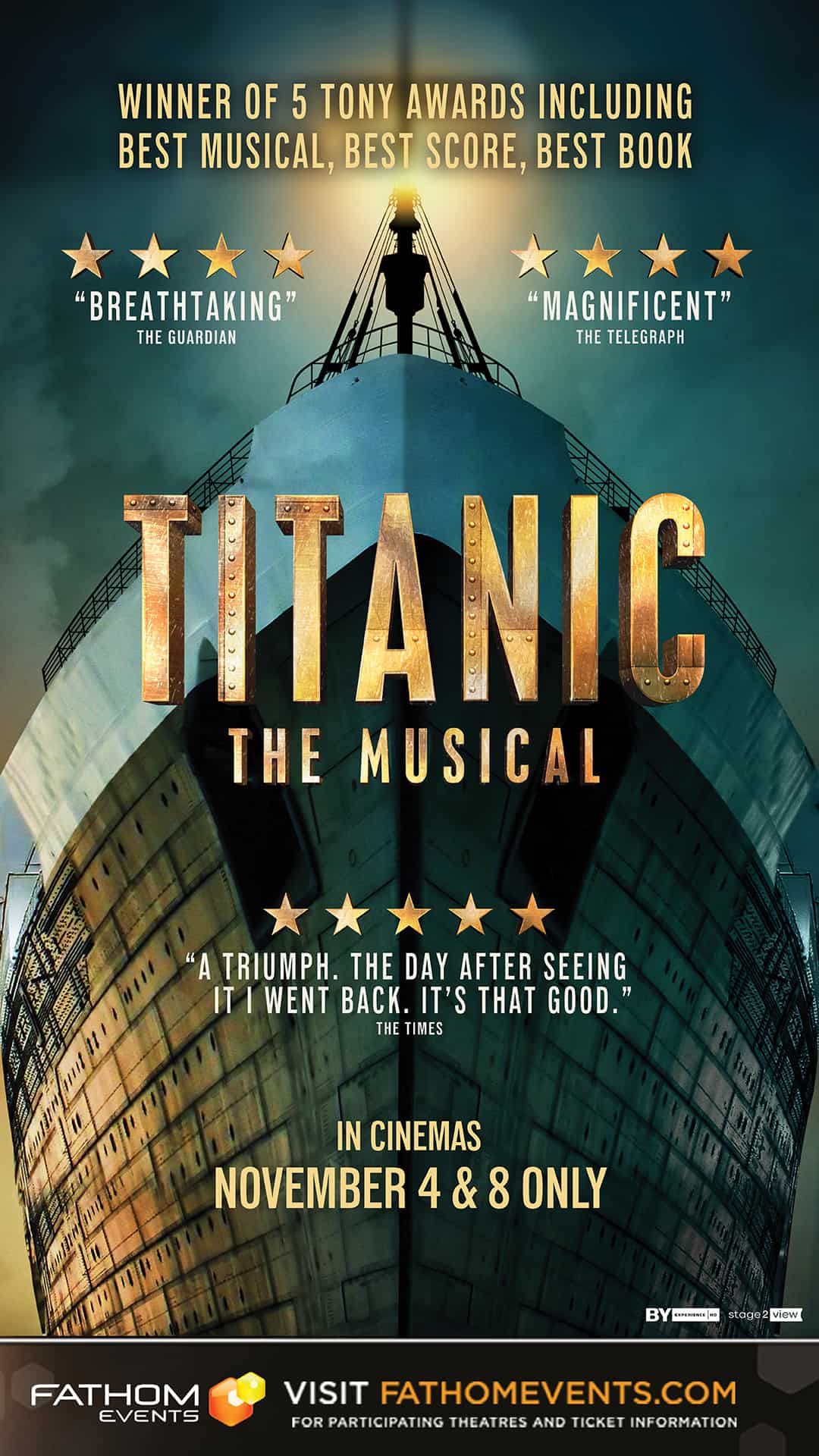
Fathom events has been known over the last few years for bringing some excellent live events to movie screens, and many have been from the UK, where filming stage productions seems to be a bit less complicated. There has been some argument over the years about if filming and streaming of big Broadway and UK productions would lead to less interest in seeing things in person. As someone who is consistently looking for the opportunity to consume whatever theatre I can, this cannot be further from the truth. Seeing things like National Theatre Live or PBS’s Great Performances only fueled my desire to eventually make trips to New York and London and to attend as much live theatre in Utah as I can manage.
This revival of Titanic, directed by Thom Southerland, is full of a lot of magic from the original production, some significant changes, and the unique experience of watching a live production filmed for the big screen rather than in person. The story of the sinking of the Titanic is one that most people are aware of. Therefore, making a musical that can be intriguing is complicated at best, because everyone in the audience knows how the story ends. Cameron very famously did this by making up a fictional love story in his film. What I appreciate about Yeston and Stone’s rendition is their usage of actual figures in history, and how they played out this tragedy in real time, one choice after another. From the captain of the ship, Edward Smith (played by Graham Bickley), to the designer Thomas Andrews (played by Ian McLarnon), and one of the main financiers, J. Bruce Ismay (played by Martin Allanson), the viewers are treated to a pretty accurate history of what brought this unsinkable ship to the bottom of the ocean. These three actors give strong portrayals of the emotions of excitement and pride as the ship sets sail, through the difficult character development when discovering that their choices and pride have led to the demise of so many people, and then the psychology of each as they behave when faced with the reality that the ship will not survive.
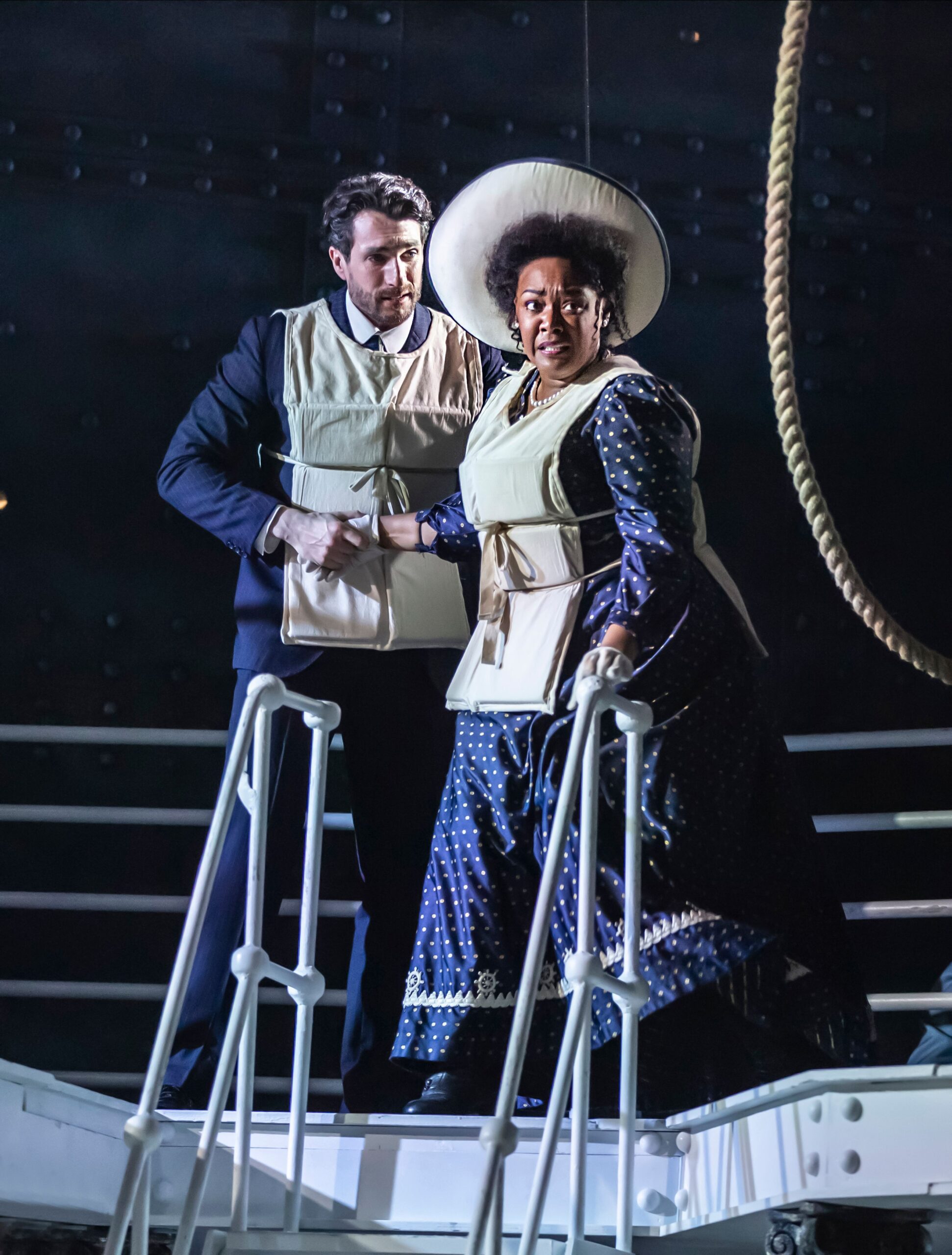
One of the most touching parts of Titanic the Musical is the highlighting of the story of Isidor and Ida Straus (played by David Delve and Valda Aviks). This historical couple (who were the owners of Macy’s department store) chose to go down with the ship together and allow others to take places on the lifeboats. The song “Still,” while not the most beautiful vocally in the production, embodies a love so true that it is a shame that a Hollywood movie was not made highlighting this story alone.
As for vocal standouts, Adam Filipe, had large shoes in my mind to fill in the role of Frederick Barrett, which is how I was first introduced to the talents of Brian D’Arcy James. In the haunting “Barrett’s Song,” Filipe showed off is exquisite tenor, while also introducing the stark difference of being a worker on the ship, compared to first class passengers who were on board merely to bathe in the decadence of the spectacle. Later on in the show, the “Proposal Song” also showcased to Filipe’s smooth vocal skills, while also showing the hope that those of the lower classes had when taking a transatlantic trip. The ensemble number “Lady’s Maid” further emphasized the hopes of all those who were immigrating to North America.
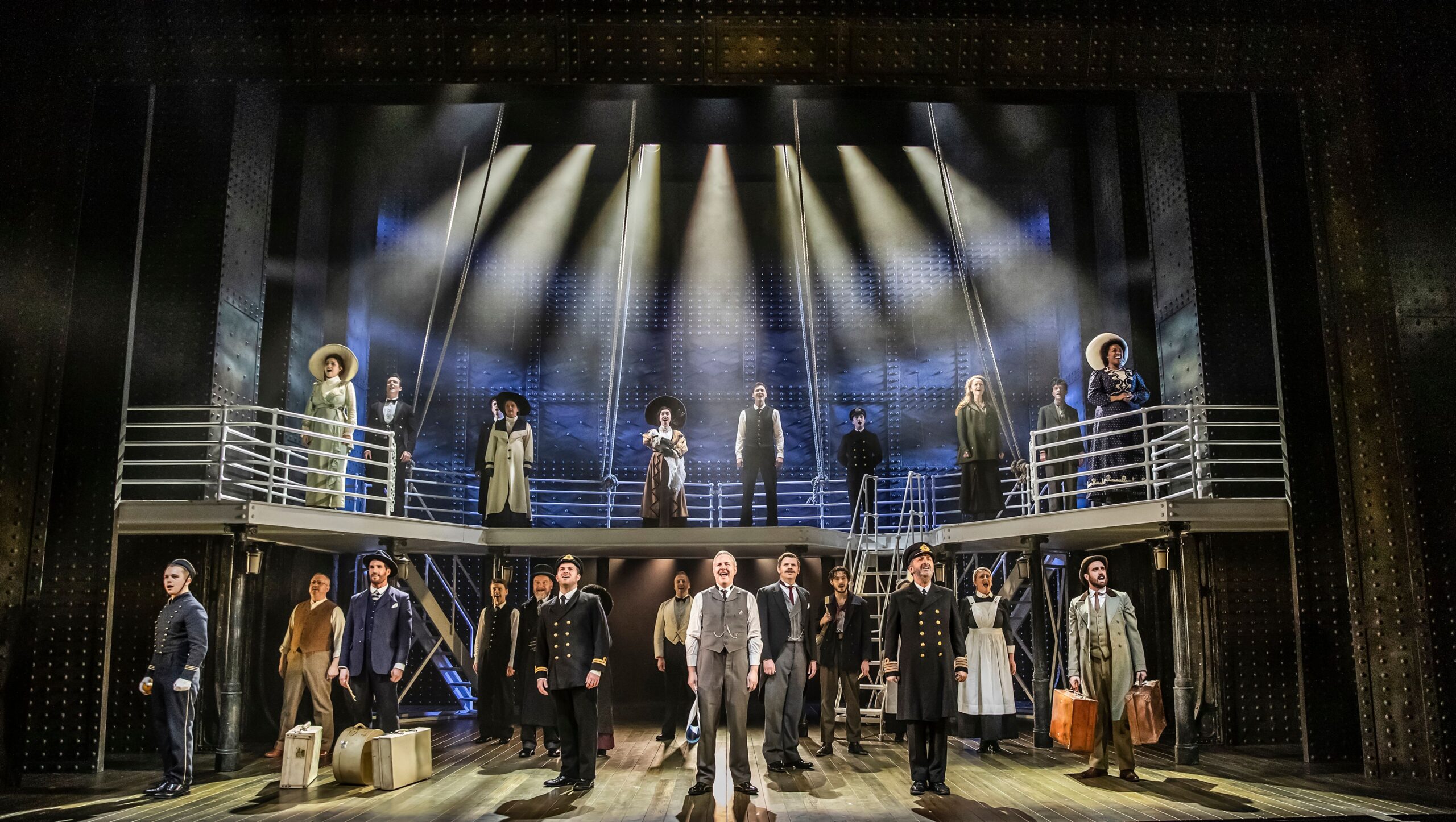
Music director Mark Aspinall has engineered this show the majestic performance I remember from 26 years ago. Of particular importance musically was the “Epilogue,” which is in many ways identical to the opening of the show, yet the eerie interpretation in this rendition truly transported me to a place that left me wondering what it must have been like to be a survivor in such a catastrophic event.
Before the show ends, many of the surviving characters stand in blankets in front of a list of names of people who did not survive the sinking of the Titanic, as they discuss actual facts about the tragedy. The feeling of the music and words and how they discuss the lasting ramifications of the events was truly moving.
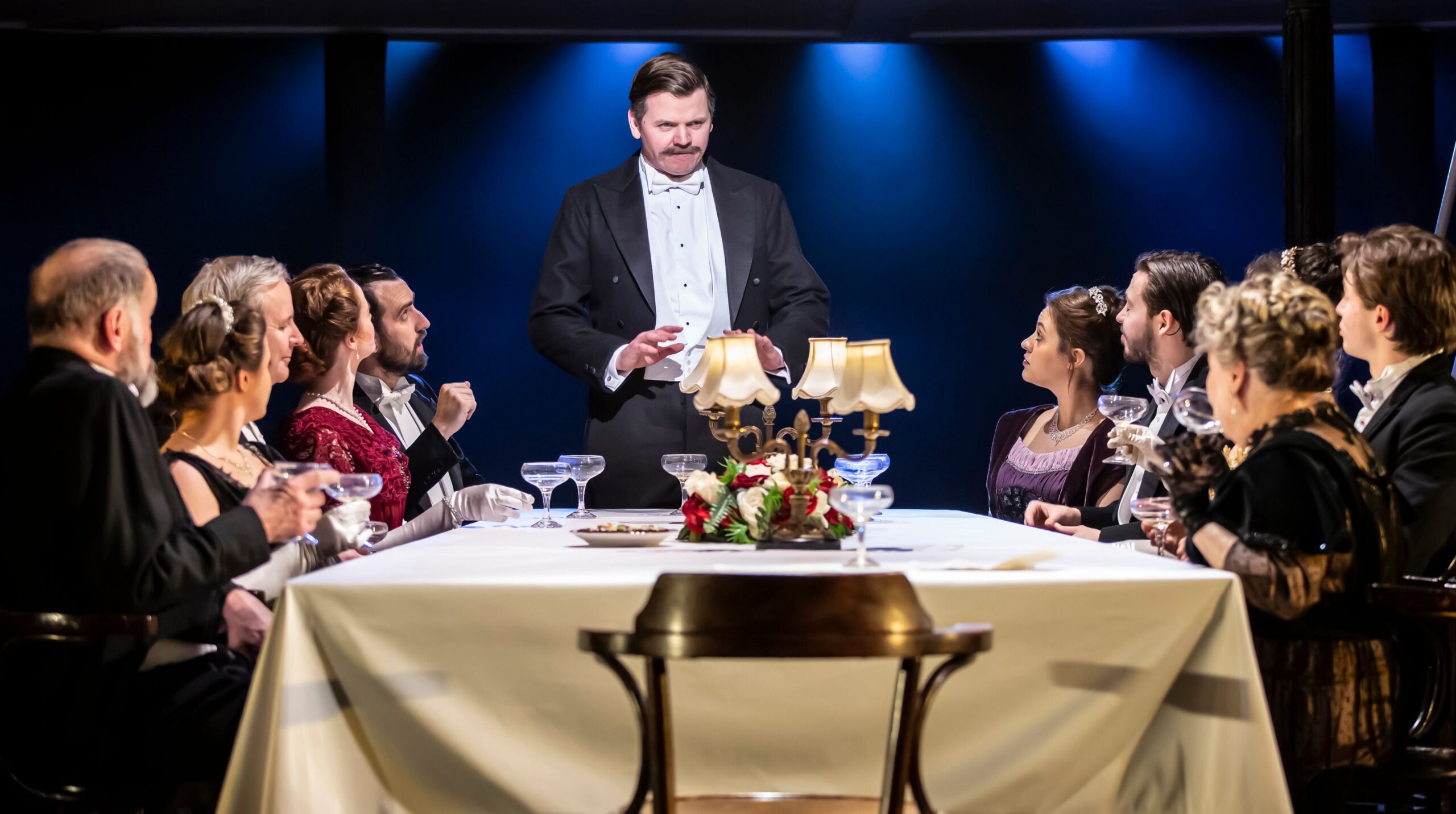
The Fathom Events broadcast of Titanic the Musical a treat for historical buffs, theatre lovers, and anyone interested in the grand story of the unsinkable ship. It is well worth audience members’ time to see this production in movie theaters on November 4 or 8th. Indeed, not only should audiences see this particular masterpiece, but also support in general the idea of theatre being shared internationally through in a broadcast. The more access people have to great art, the more it will spread and grow on Broadway, in London, and in communities large and small.
[box]The Fathom Events broadcast of the United Kingdom tour of Titanic the Musical plays November 4 and 8 in movie theaters throughout the United States. Ticket prices vary. For more information, visit https://www.fathomevents.com/events/titanic-the-musical.[/box]
